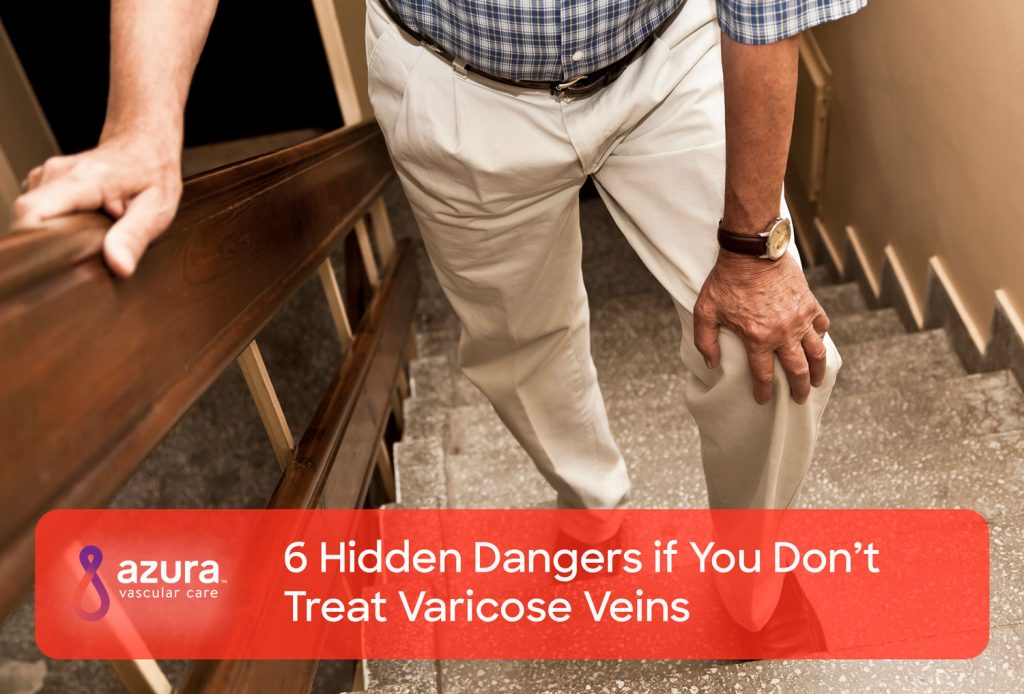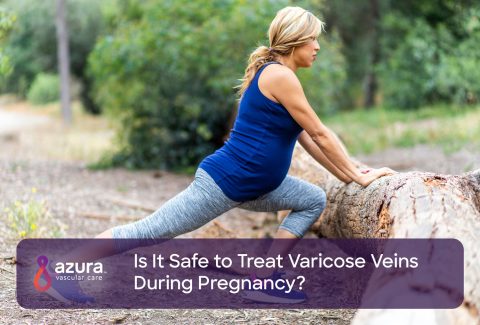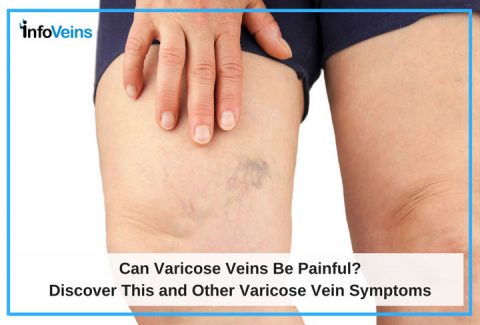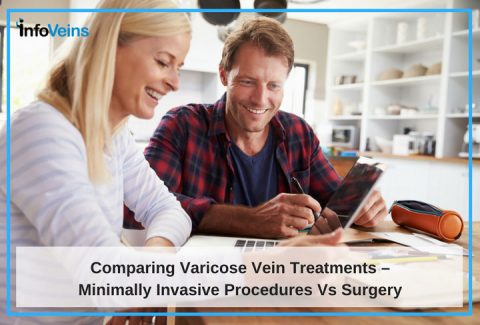
If you’re like a lot of people who suffer from varicose veins, you may not like how they make your legs look. You may feel self-conscious, not wanting others to see them. You may be surprised to learn that your varicose veins may not be just a cosmetic issue.
Varicose Veins Could Be More than Just a Cosmetic Issue
Varicose veins are bulging, twisted veins that can be seen and felt right under the skin. They commonly occur on the legs, and are present in up to 30% of people.i Sometimes, they really are just a cosmetic issue, which is most often the case with spider veins. Spider veins are a smaller version of varicose veins that can appear as red or blue lines in a webbed pattern. Varicose veins and spider veins differ, largely because varicose veins can lead to more serious health problems. And if your varicose veins are painful, it’s important that you don’t ignore them.
Varicose veins form when the one-way valves in the veins that are designed to prevent the back flow of blood become leaky and blood pools in the veins. Or, for various reasons, the vein walls may become weak and unable to handle the pressure from the increased amount of blood. These factors are thought to lead to the enlargement and twisting of the veins, which ultimately results in the appearance of varicose veins.
Varicose veins can significantly impact quality of life, and up to 70% of people with them will have leg symptoms beyond just appearance.ii Painful varicose veins should not be ignored.
Why Painful Varicose Veins Should NOT Be Ignored
Painful varicose veins can be a sign of a more serious problem, such as a blood clot, an open sore or a skin infection. If you have a varicose vein that is becoming or has become painful, it could be a clue that something more serious is happening and you should see your doctor.
Painful varicose veins can get worse, and as they worsen, you can develop new complications as a result. Hidden dangers to be aware of if you don’t treat varicose veins include:
- Leg Swelling – As pressure builds within the veins, fluid from the blood can leak into the surrounding tissues, causing swelling. Signs of swelling can include a tight sensation in your skin, or an impression left in your skin after removing your socks or shoes. In more severe cases, your shoes may not fit and your leg may become very swollen. The skin may even leak a clear or yellowish fluid. These symptoms may improve with leg elevation and special elastic socks called compression stockings. If the swelling persists, it can lead to changes in the skin, such as hardening or a change in skin color.iii
- Skin Ulcers – Varicose veins can cause swelling, which over time can result in skin changes. When this occurs, skin can become less likely to heal from even minor injuries. This happens because the swollen tissue can limit the flow of nutrients and oxygen to the involved tissue, both of which normally aid the healing process. The constant tension on the tissues can prevent healing as well, creating non-healing ulcers. Reducing the swelling is a key treatment for these non-healing ulcers.iii
- Skin Infection – When the tissues are stretched from swelling, this interferes with the body’s natural defense against infection. Bacteria that are normally present on our skin can get into the body, causing a skin infection called cellulitis. The swelling may increase and there will generally be a distinct area of redness and warmth. Medication is needed to treat skin infections. Lessening the swelling can also help the infection resolve.iv
- Bleeding – There is a larger than normal amount of blood in varicose veins, sitting right below the surface of the skin. If the vein is hit or cut, there can be a significant amount of bleeding, more than you would normally expect. Or, if the skin isn’t broken, there may be distinct bruising. It can also take longer than normal for bleeding to stop if the injury is large.v
- Thrombophlebitis – Blood is more likely to clot in a varicose vein. Up to 3% of people with varicose veins will develop blood clots.vi The area becomes painful, warm to the touch and the vein can become hard.
- Deep Vein Thrombosis – Occasionally, in about 25% of people who develop blood clots in varicose veins, the clots will develop in deeper veins.vi Deep vein thrombosis is a serious medical condition that requires immediate medical treatment. The leg can be swollen, warm, red and painful. The biggest risk is that part or all of the blood clot may break off and move to the lungs, causing a life threatening condition called pulmonary embolism.
If you have varicose veins and they are painful, talk to your doctor. If you have a swollen varicose vein or leg that is painful, red and warm to the touch, please seek medical attention immediately to be evaluated for a deep vein thrombosis. Remember, you may not necessarily need surgery to get varicose veins treatment. Today, there are minimally invasive alternatives to surgery available that may be a good option for you. Talk to your doctor to learn more.
Sources
i Lin, F., Zhang, S., Sun, Y., Ren, S., Liu, P., The Management of Varicose Veins. Int Surg, 2015. 100: p. 185-189. https://www.ncbi.nlm.nih.gov/pmc/articles/PMC4301287/
ii Wrona, M., Jockel, K., Pannier, F., Bock, E., Hoffmann, B., Rabe, E., Association of Venous Disorders with Leg symptoms: Results from the Bonn Vein Study 1. Eur J Vasc Endovasc Surg, 2015. 50: p. 260-267. http://www.ejves.com/article/S1078-5884(15)00333-0/pdf
iii Wittens, C., et al., Editor’s Choice – Management of Chronic Venous Disease, Clinical Practice Guidelines of the European Society for Vascular Surgery. Eur J Vasc Endovasc Surg, 2015. 49: p. 678-737. http://www.ejves.com/article/S1078-5884(15)00097-0/pdf
iv Pugliese, D., Infection in Venous Leg Ulcers: Considerations for Optimal Management in the Elderly. Drugs Aging, 2016. 33(2): p. 87-96. https://www.ncbi.nlm.nih.gov/pubmed/26833351
v National Heart, Lung and Blood Institute. What Are the Signs and Symptoms of Varicose Veins? https://www.nhlbi.nih.gov/health/health-topics/topics/vv/signs (updated 2/13/2014, accessed 11/30/2016)
vi Rikimaru, H., Clinical Features and Developing Risks of Saphenous Vein Thrombophlebitis. Ann Vasc Dis, 2016. 9(2): p. 85-90. https://www.ncbi.nlm.nih.gov/pmc/articles/PMC4919299/



